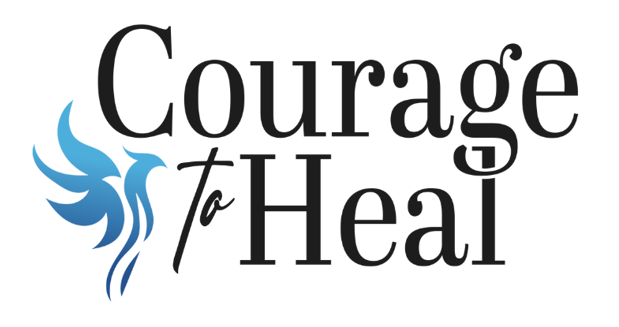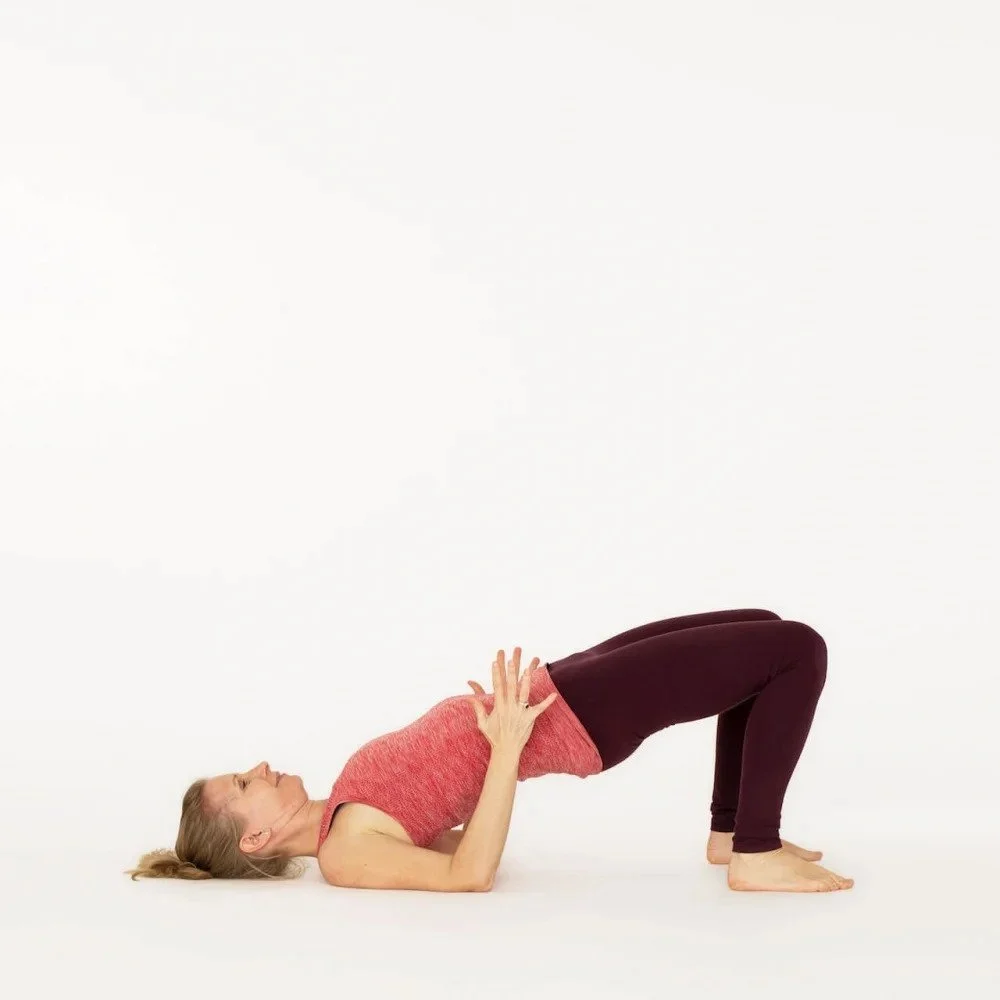Yoga Poses to Release Trauma
If you are a trauma survivor and you often feel “on edge,” you are not alone – and you are definitely not imagining it. Research and clinical experiences tell us that trauma is often stored in the body, causing emotional and physical tension. Trauma causes the body to remain in a heightened state of alertness, as the nervous system is stuck in "fight, flight, or freeze" mode even after the danger has passed.
The popular book “The Body Keeps The Score” talks about this effect in depth: trauma can cause permanent changes to our muscular and endocrine systems. This affects the survivors’ capacity to concentrate, to remember, to form trusting relationships, and even to feel at home in their own bodies.
The author, renowned psychologist Bessel van der Kolk, talks about the body-mind connection and highlights the importance of somatic – or body-based – work for trauma recovery.
One of these somatic practices is yoga. Trauma-sensitive yoga can be a powerful tool to release stored emotions and promote healing. And the great thing is, you don’t need to twist yourself into a pretzel or break a sweat to get the trauma-releasing effect.
In this article, you will find seven gentle yoga poses that can help you release some of that stored emotional tension. Beware as sometimes the release can be powerful enough to cause you to cry.
The Role of Breath in Emotional Release
The key to shifting out of "fight, flight, or freeze" mode is activating the parasympathetic nervous system, which brings us into a “rest-and-digest” mode. Conscious breathing during yoga activates this system, allowing the body to relax and release stored emotions.
Therefore, it’s important to remember to take long, slow breaths while staying in these poses. My personal favorite is to breathe in for six seconds and breathe out for six seconds as I hold each pose, also known as “coherent breathing.”
Creating a Safe Space for Yoga Practice
It’s important to create a safe and comfortable environment for a home yoga practice, such as using a quiet space with dim lighting. You can even add aromatherapy by using an essential oil diffuser or a candle.
As you will find, trauma-sensitive yoga can be a gentle, supportive practice for emotional healing.
Guidelines
If you are a yoga beginner, start gentle and hold each pose for about 3 long breaths. Eventually, you can work up to 3-5 minutes per pose. The key is to really listen to your body and stop if anything feels physically uncomfortable or painful.
The beauty of this practice is that it’s really flexible. You don’t have to do all seven poses at once – you can just pick one or two that really resonate with you.
So, grab your mat (or a towel), and let’s release some trauma together!
7 Yoga Poses for Releasing Trauma
1. Child’s Pose (Balasana) is a deeply restorative yoga pose that can foster a sense of safety, grounding, and deep relaxation. In this position, the body is curled inward, allowing for a feeling of protection and comfort, which is essential for survivors. This sense of security encourages the nervous system to relax, helping to alleviate the chronic tension that trauma often creates.
The pose gently stretches the lower back, hips, and shoulders—common areas where emotional stress and trauma tend to accumulate. Additionally, Child’s Pose encourages slow, deep breathing, which activates the parasympathetic nervous system, shifting the body from a state of hypervigilance to one of calm and rest.
2. Pigeon Pose (Eka Pada Rajakapotasana) is particularly effective for releasing trauma stored in the hips, which are often referred to as a "storage center" for emotional tension and stress. Trauma can cause tightness and discomfort in the hips, as emotions such as fear, sadness, and anger tend to accumulate in this region. By deeply stretching the hip flexors and opening the hips, Pigeon Pose allows for the gradual release of this stored tension.
As you hold the pose and breathe deeply, the physical discomfort and emotional resistance in the hips may begin to soften, facilitating the release of blocked emotions. The act of surrendering into the pose and staying with the discomfort can be a powerful tool for trauma healing, as it allows the body to safely release stored trauma, while also calming the nervous system and promoting a sense of emotional balance and relaxation.
3. Bridge Pose (Setu Bandha Sarvangasana) is a powerful heart-opening posture that can stretch and open key areas where emotional stress and tension often accumulate - the chest, shoulders, spine, and hips. Trauma frequently causes the body to close off and tighten, especially around the heart and chest area, as a protective mechanism. Bridge Pose counteracts this by lifting and opening the chest, which can release pent-up emotions and tension stored in the heart and lungs.
This pose also engages the back and the hips, where trauma can manifest as physical tightness. The upward lift of the pose promotes deep, conscious breathing, which is essential for calming the nervous system. Through the combination of heart-opening and hip-releasing benefits, Bridge Pose allows for the emotional release and physical healing necessary to work through trauma and create a sense of openness and peace in the body.
4. The Melting Heart Pose (Anahatasana) is an effective yoga pose because it deeply opens the chest, shoulders, and upper back, areas where emotional tension is often held. As a heart-opening posture, it encourages vulnerability and allows for the release of emotions that may have been suppressed or locked within the body due to trauma. The act of lowering the chest toward the ground while extending the arms forward creates a sense of surrender and letting go, which can help dissolve emotional barriers and tension.
This pose also stretches the spine and creates space in the upper body, promoting deep breathing and activating the parasympathetic nervous system, shifting the body out of the fight-or-flight mode.
5. Reclined Butterfly Pose (Supta Baddha Konasana) is a deeply restorative posture that gently opens the hips and heart—two areas where emotional tension and trauma are often held. In this pose, the body is in a relaxed, reclined position with the soles of the feet together and knees falling outward, creating a passive stretch in the hips, inner thighs, and groin. The gentle opening of the hips helps release emotional blockages, as trauma and stress tend to accumulate in this area, causing tightness and discomfort.
Additionally, the reclined position of the pose encourages the chest and heart to open, allowing for a release of tension in the upper body. The pose also fosters a sense of safety and surrender, which is essential for trauma healing.
6. Cat-Cow Pose (Marjaryasana-Bitilasana) is a dynamic yoga posture that helps release trauma stored in the body by gently mobilizing the spine and connecting movement with breath, two key elements for releasing physical and emotional tension. Trauma often causes the body to hold tension in the spine and surrounding muscles, creating stiffness and restricting movement.
By synchronizing movement with breath, Cat-Cow helps individuals become more attuned to their body, fostering a sense of awareness and release. The rhythmic, repetitive motion of the spine in this pose helps loosen tight areas and gently moves stuck emotional energy, providing a safe and grounding way to release stored trauma.
7. Corpse Pose (Savasana) is one of the most important yoga poses for releasing trauma stored in the body because it allows for complete relaxation and surrender. In Savasana, the body is fully supported, lying flat on the ground, which encourages the release of muscular tension and promotes a deep sense of safety and calm.
The stillness of Savasana provides a space for deep breathing, which calms the mind and body, allowing any residual tension or trauma held within the muscles or connective tissues to dissolve gradually. This space of quiet, non-judgmental rest allows for emotional processing and healing, gently guiding the body toward balance and emotional release.
In conclusion, releasing trauma through yoga is a deeply personal journey that requires patience, compassion, and consistent effort. It’s not just about the poses themselves but about creating a space where you can reconnect with your body in a safe, mindful way.
Trauma is often stored in our muscles and tissues, and yoga offers a gentle yet powerful method for unlocking that tension, both physically and emotionally. Remember that the healing process is not linear—some days will feel more challenging than others, and that’s okay.
Pairing these poses with deep, intentional breathing helps signal to your nervous system that it’s safe to let go. Over time, you may notice subtle shifts in your body and emotional state, as layers of tension and trauma start to soften.
Trust in the process, and give yourself permission to move at your own pace. If certain emotions arise while practicing, allow them to surface without judgment, knowing that this is part of the healing journey.
***
Above all, be kind to yourself. Healing trauma is not something that happens overnight, but with regular practice, self-awareness, and an open heart, yoga can be a transformative tool in reclaiming your sense of peace and well-being. If you find yourself struggling at any point, consider working with a trauma-informed yoga instructor or therapist who can guide you through this journey in a supportive and compassionate way.









